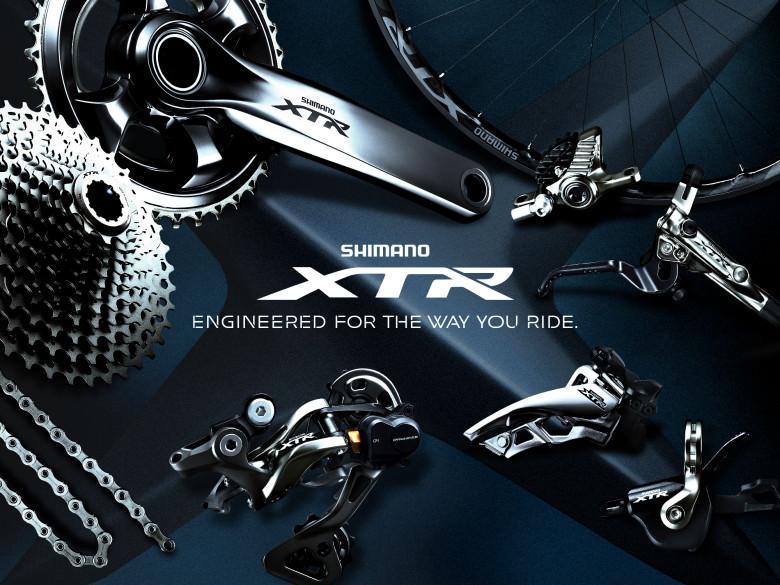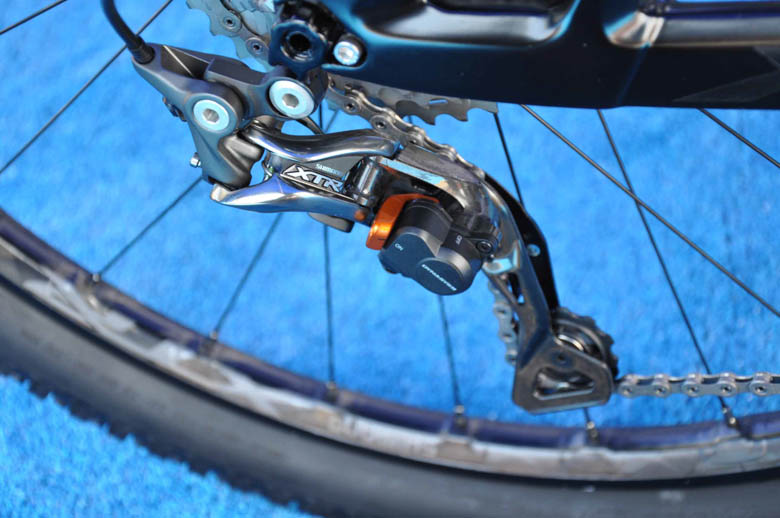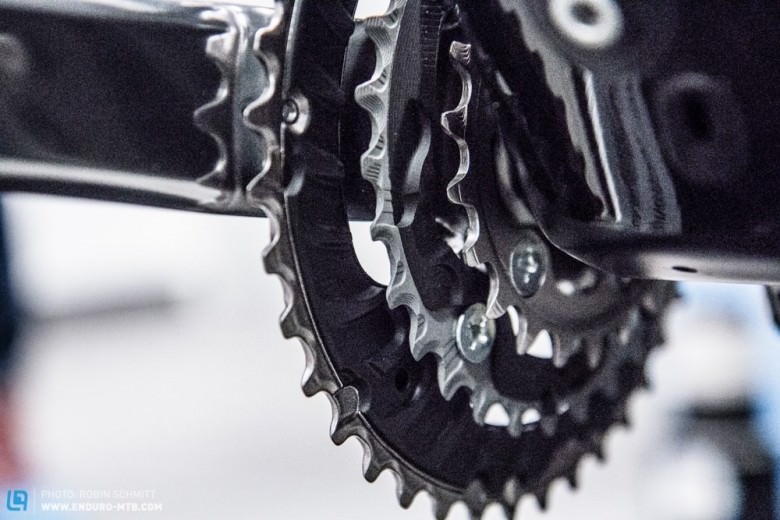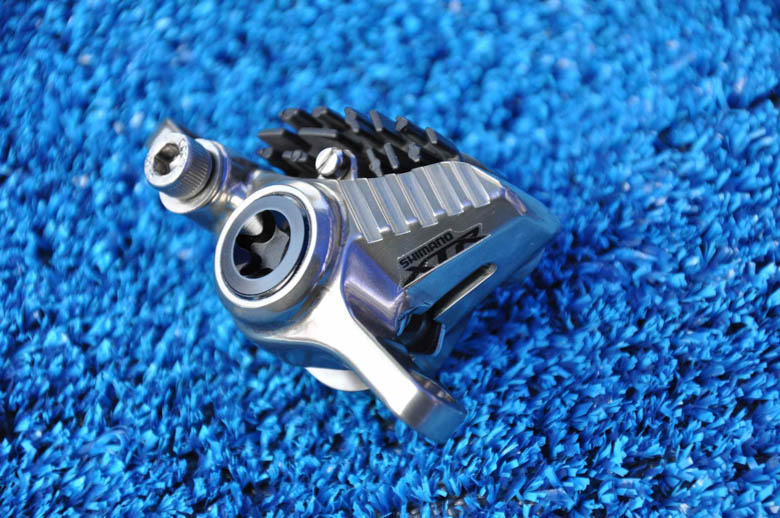First Look: Shimano 2015 XTR: Stepping up to 11Speed

Since the introduction of SRAMs XX1 group in 2012 – a big step forward in mountain bike drive-trains – everyone was curious to see what the reaction of Shimano would be. Would the big player from Japan follow SRAM or would they keep to their 10-speed philosophy? Now, two years later, it has been unveiled: With the new XTR group, Shimano introduces an 11-speed cassette, while still offering customers all the options when it comes to number of chainrings – 33-speed drivetrains for everyone? In addition, Shimano has updated the XTR brakes and introduced new wheelsets. We are at the Sea Otter Festival, California, right now and bring you our first impressions here:

Shimanos new CS-M9000 cassette has 11 – 40 tooth. That’s an wider range than any Shimano cassette before, but still behind SRAMs XX1 cassettes (10 – 42 tooth). On the other hand, the gears have a closer graduation and you don’t need a special driver body – so upgrading to Shimanos 11-speed is possible with your current hubs.

Shimano has divided the mountain bike sector into four basic categories: The competition-oriented cross-country segment focuses on physical challenges, whereas the enduro-racers segment focuses on riding of a more technical orientation. In addition to these two main categories, Shimano has created everyday-oriented sub-segments, trail riding with either a more technical or more fitness oriented focus. Each of this four segments has different requirements – and with their new XTR 11-speed lineup, Shimano wants to meet all of them – it all depends on the number of chainrings.
While race-oriented enduro and cross-country riders now can use the benefits of an single-chainring setup with Shimano components, amateur-riders, mainly using 2 or 3 chainring-setups, profit from a wider gear-range and better graduation too.

At the derailleur (XTR RD-M9000, 214 gram), Shimano has optimized their Shadow-Plus Technology. Now you can fine tune the cage damping (the level of resistance of the clutch). Also, the profile of the derailleur has reduced, this further reduces the risk of damage. Same with the new front derailleur: A new, more compact design creates more space between seat tube and tire, enabling shorter chainstays.

The new XTR group also includes two new cranks: The FC-M9000 is race-optimized, featuring a narrow Q-factor (158mm) and a superlight “Hollow Bonded”-construction of the left crankarm. This option is available for both single and double chainrings. The other crank (FC-M9020) is trail-oriented and a more robust offering which can be run with one, two or three chainrings. The single chainring comes with “Retention-Technology”, that should prevent the chain from dropping off, even without a chainguide, similiar to SRAMs X-sync technology.

XTR brakes
The new XTR brake will be available in two versions: The weight-optimized race version (front brake: 191 gram) and the heavier (239 gram), but more robust and less heat-sensitive trail-edition, featuring Shimano’s ICE-Tech technology.

XTR wheels (XTR WH-M9000)
The new XTR wheels are a clear statement for the “new sizes”: There are no 26″ wheels in Shimano’s lineup anymore, only 27.5″ and 29″. The XTR carbon wheels range spans from ultra-light XC-race wheels (set (29″): 1305 gram) up to more robust trail-wheels in 27.5″ (1621 gram) and 29″ (1673 gram). All wheels have 28 butted spokes and run on new, lighter axle systems.

All weights:

Words: Aaron Steinke Photos: Robin Schmitt, Shimano
Did you enjoy this article? If so, we would be stoked if you decide to support us with a monthly contribution. By becoming a supporter of ENDURO, you will help secure a sustainable future for high-quality mountain bike journalism. Click here to learn more.








